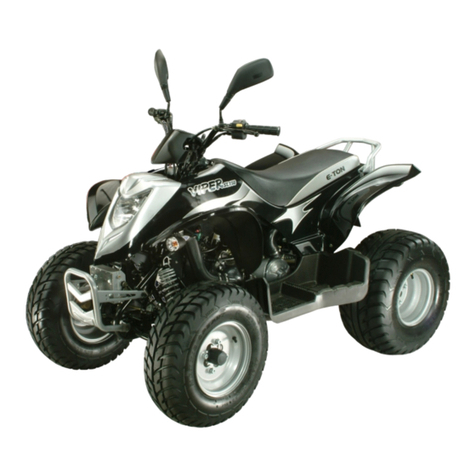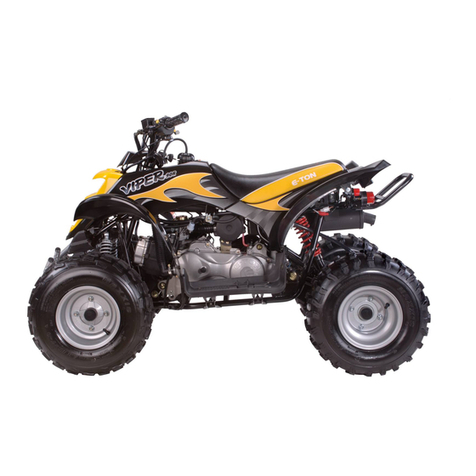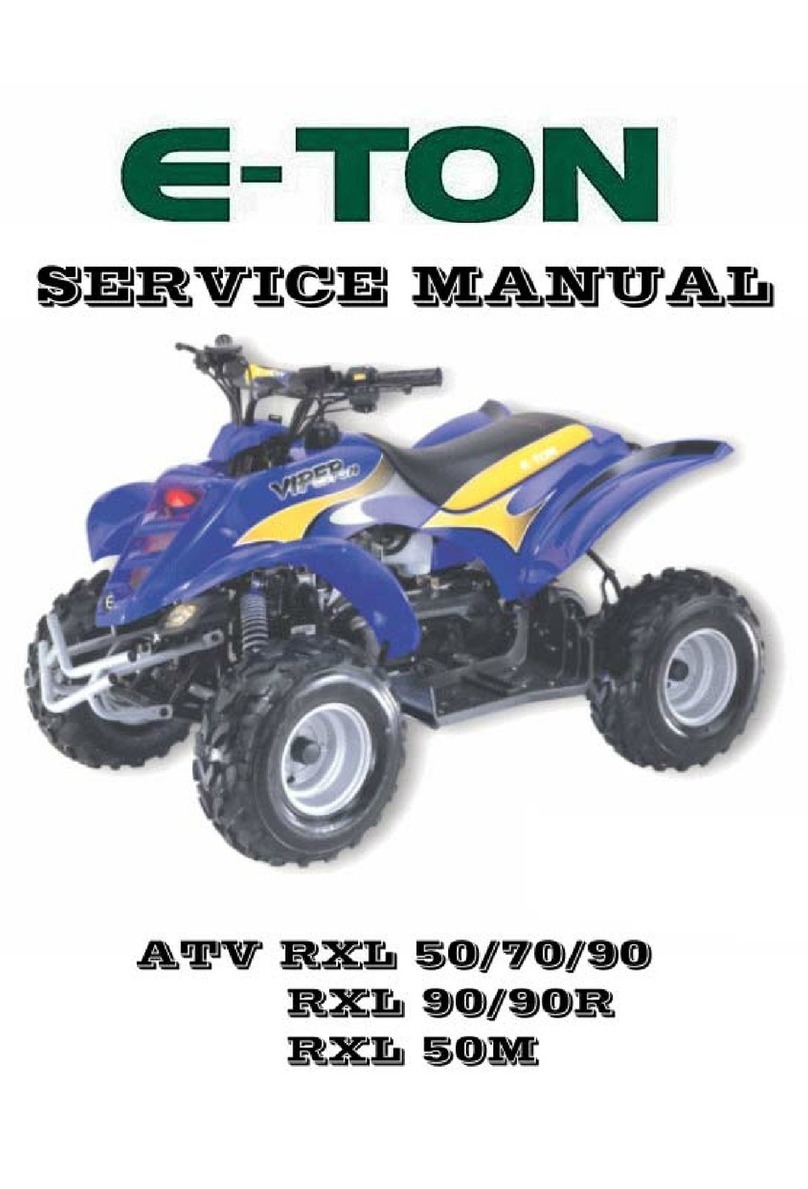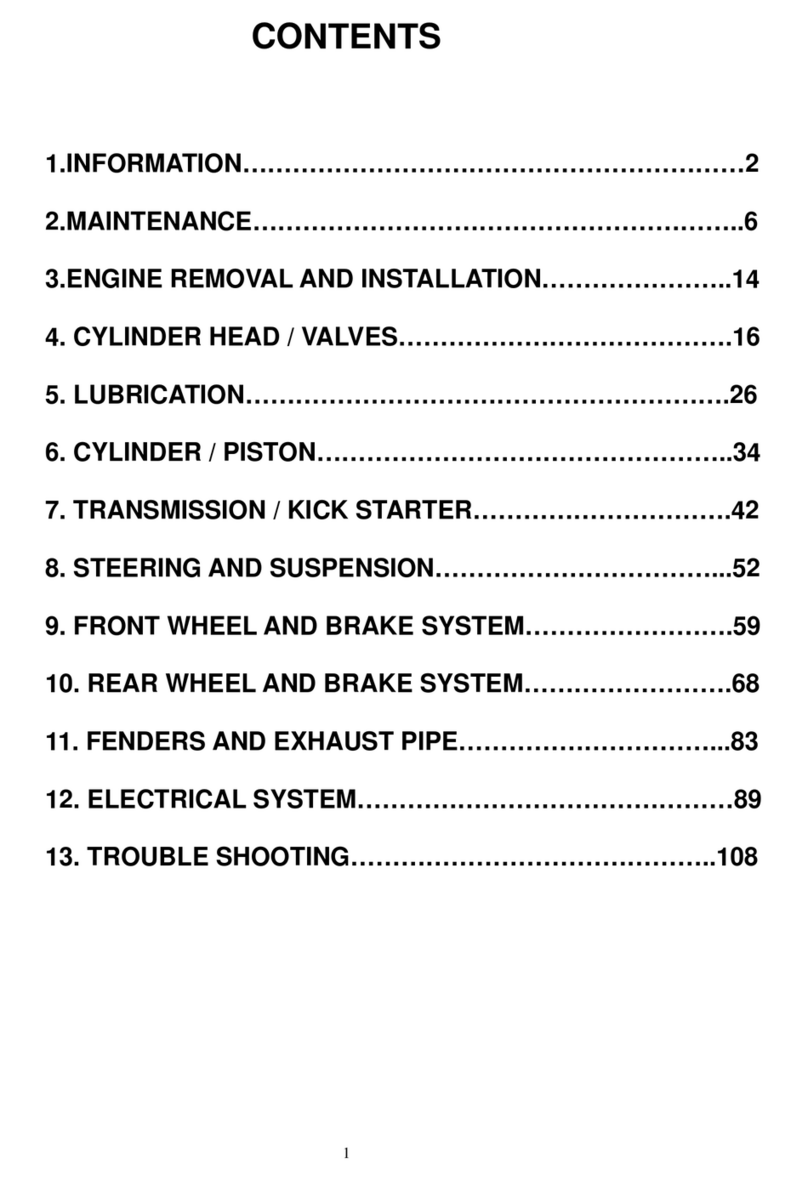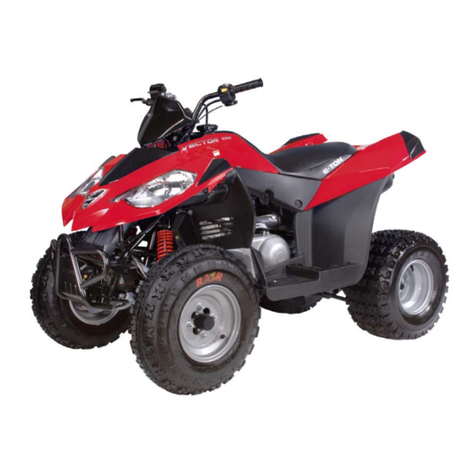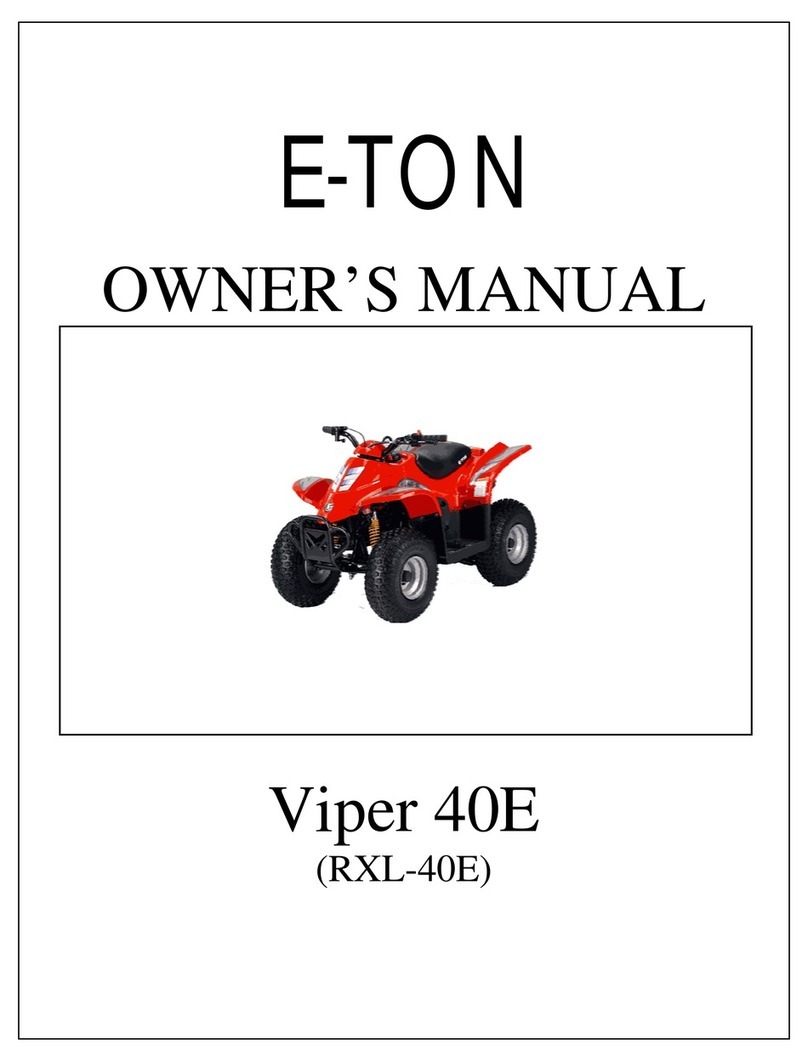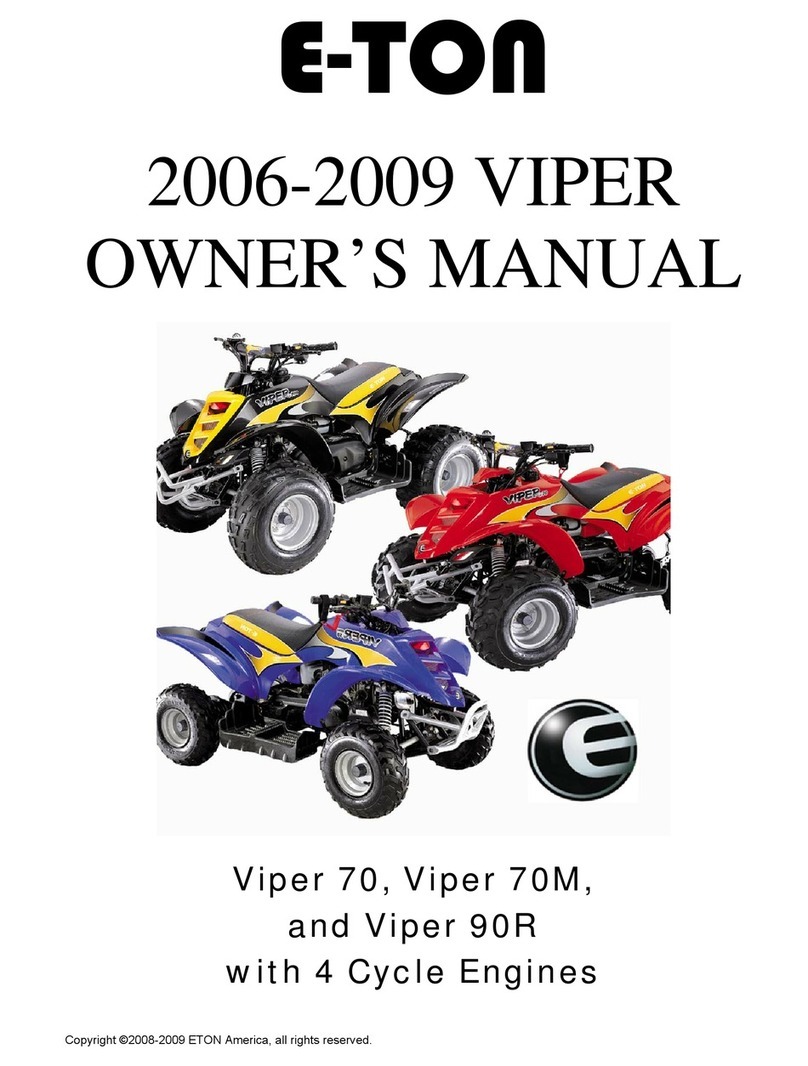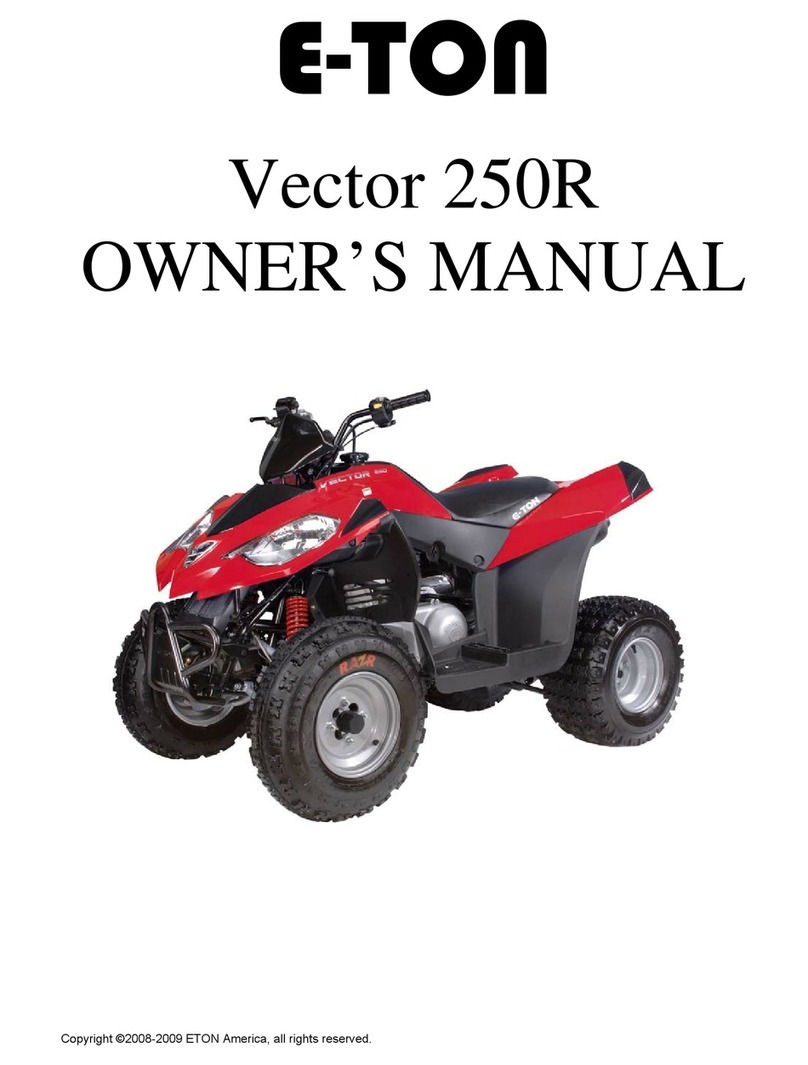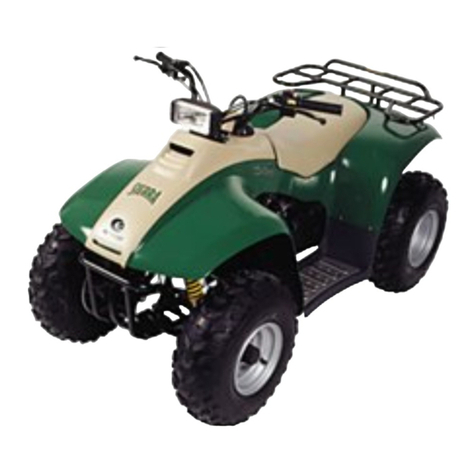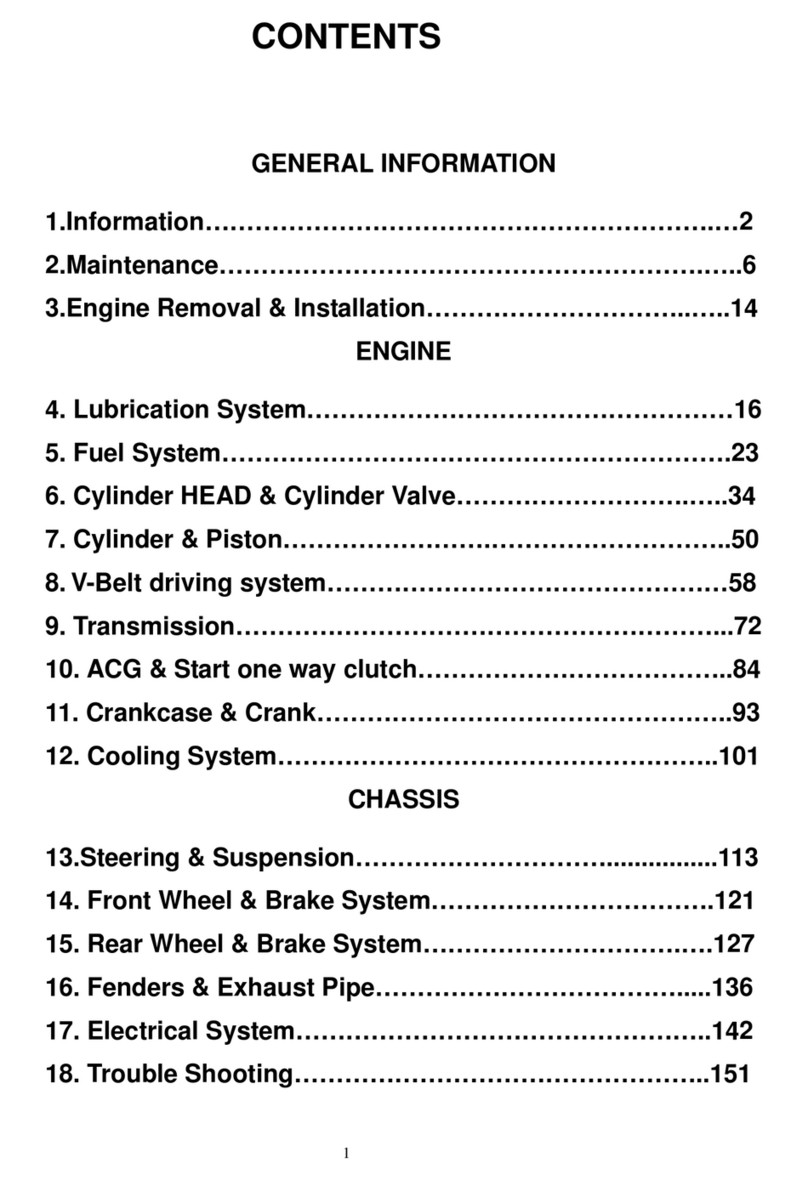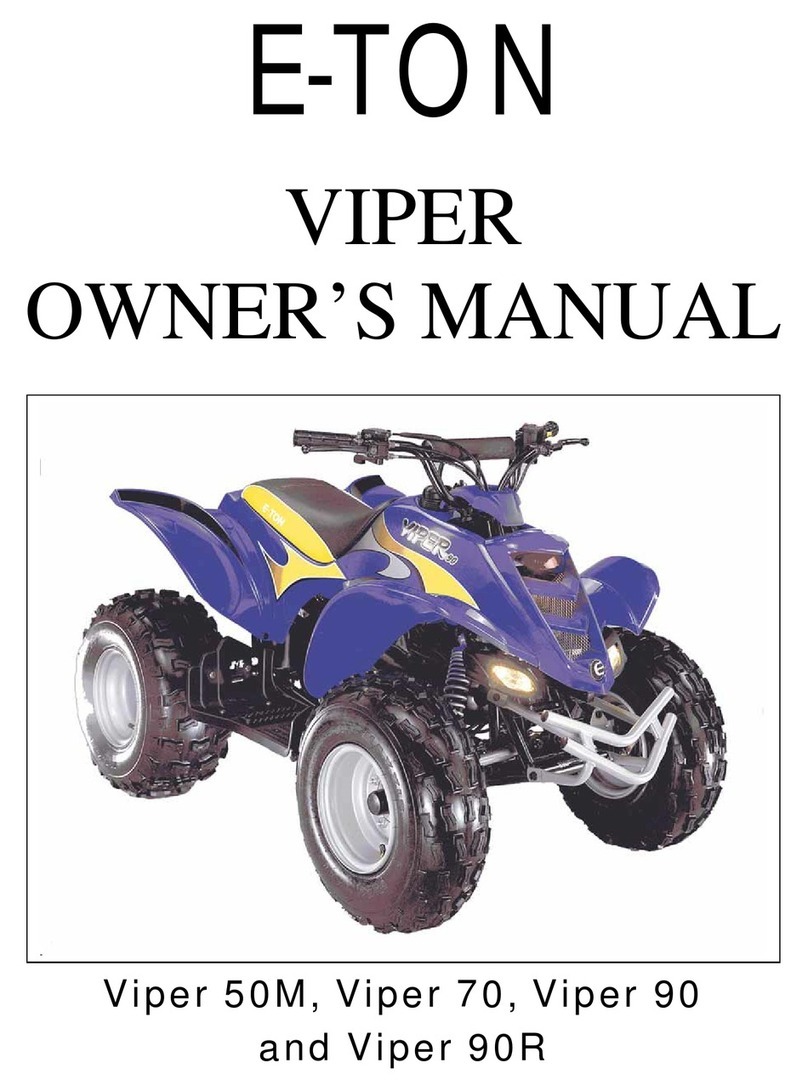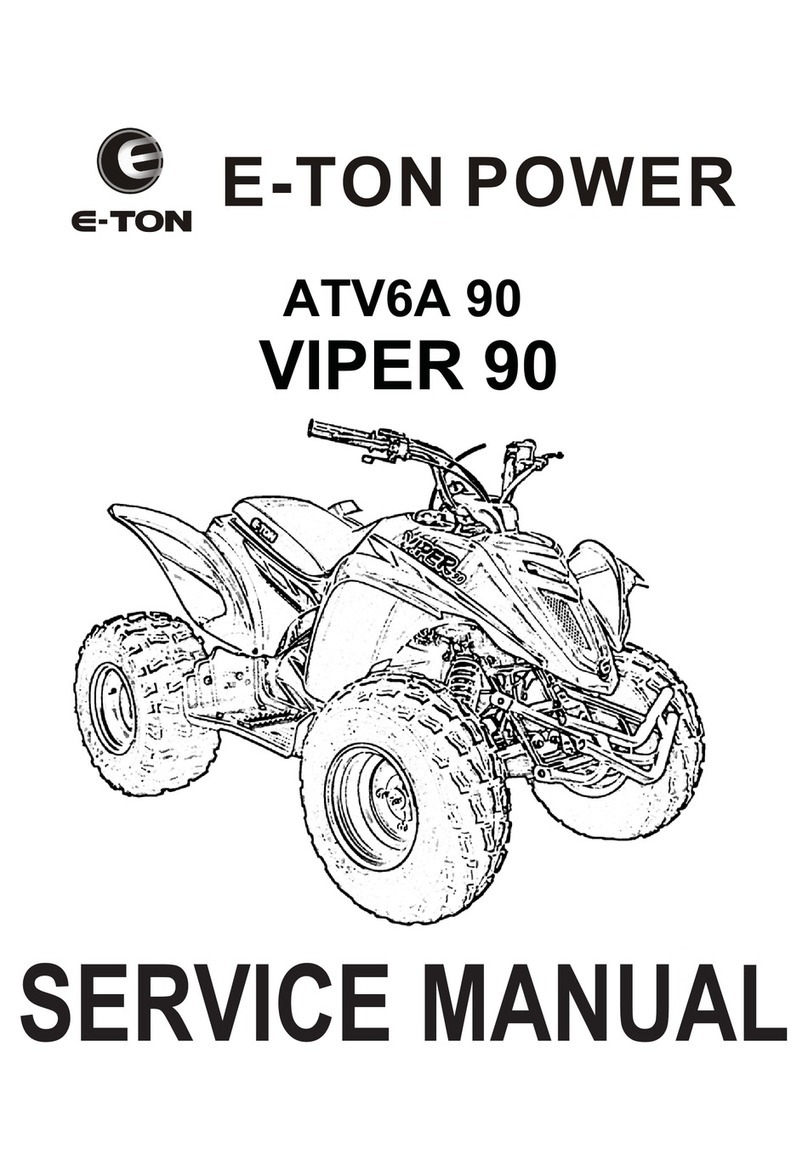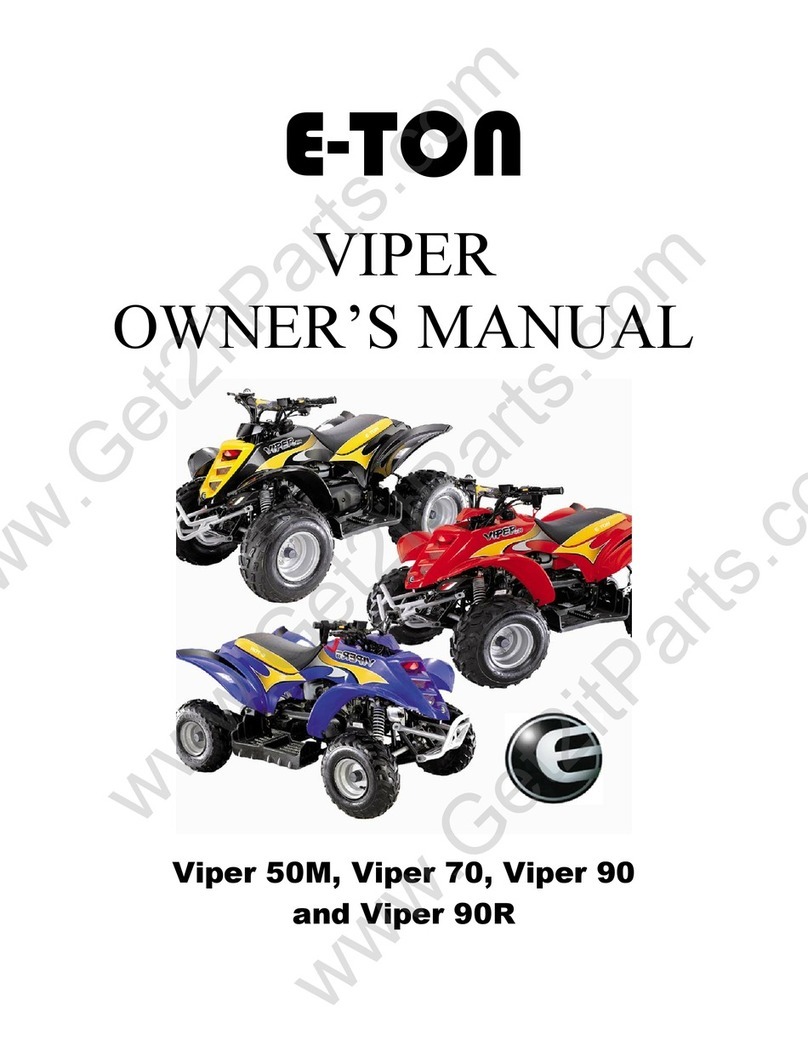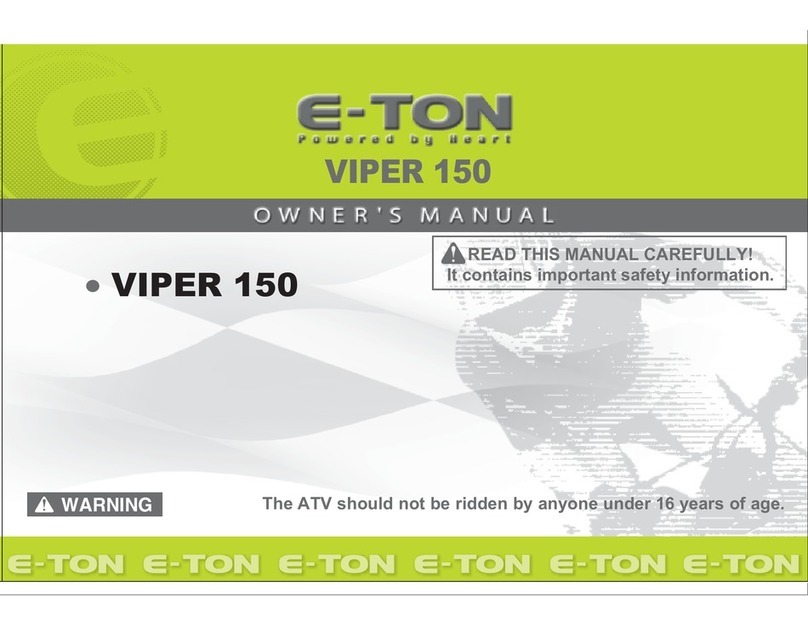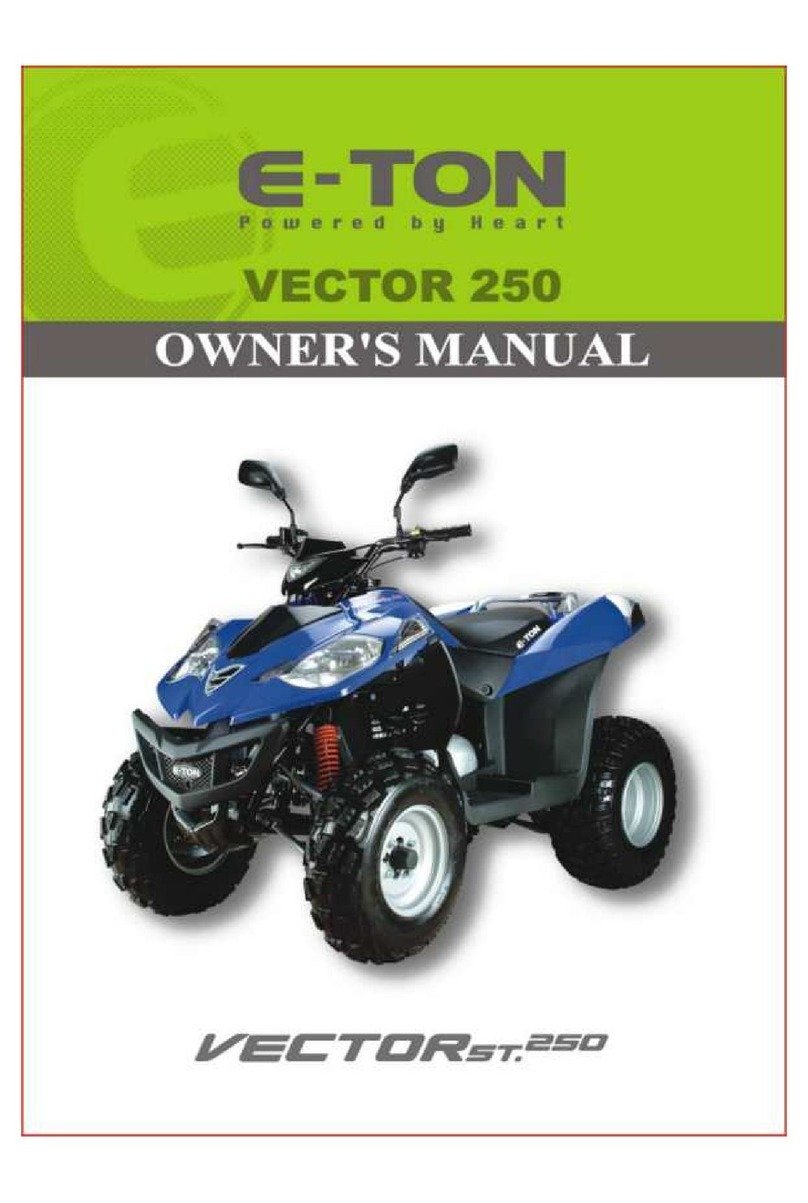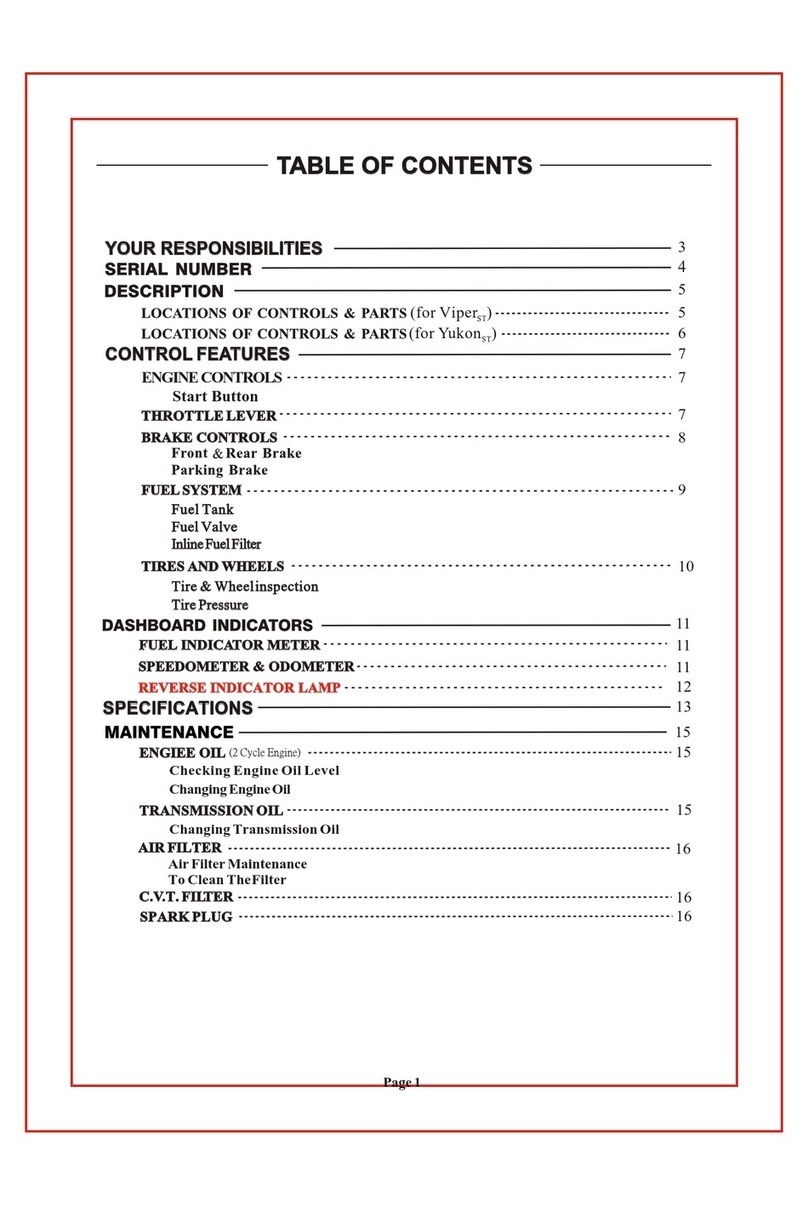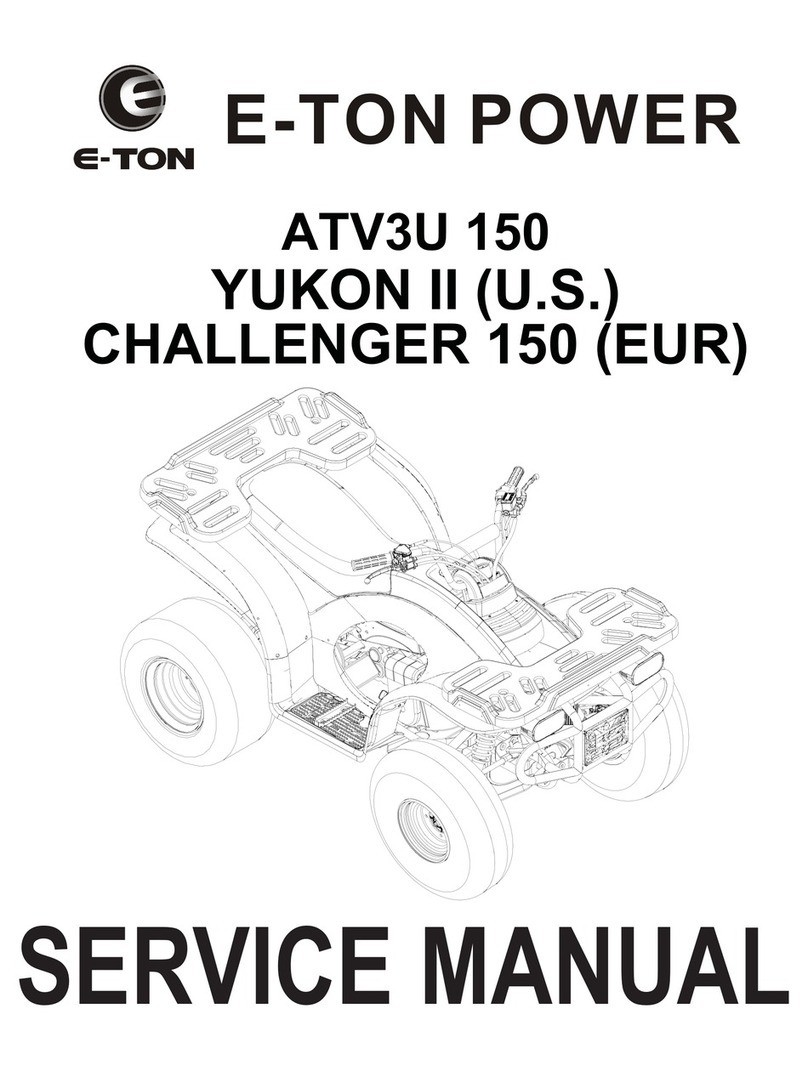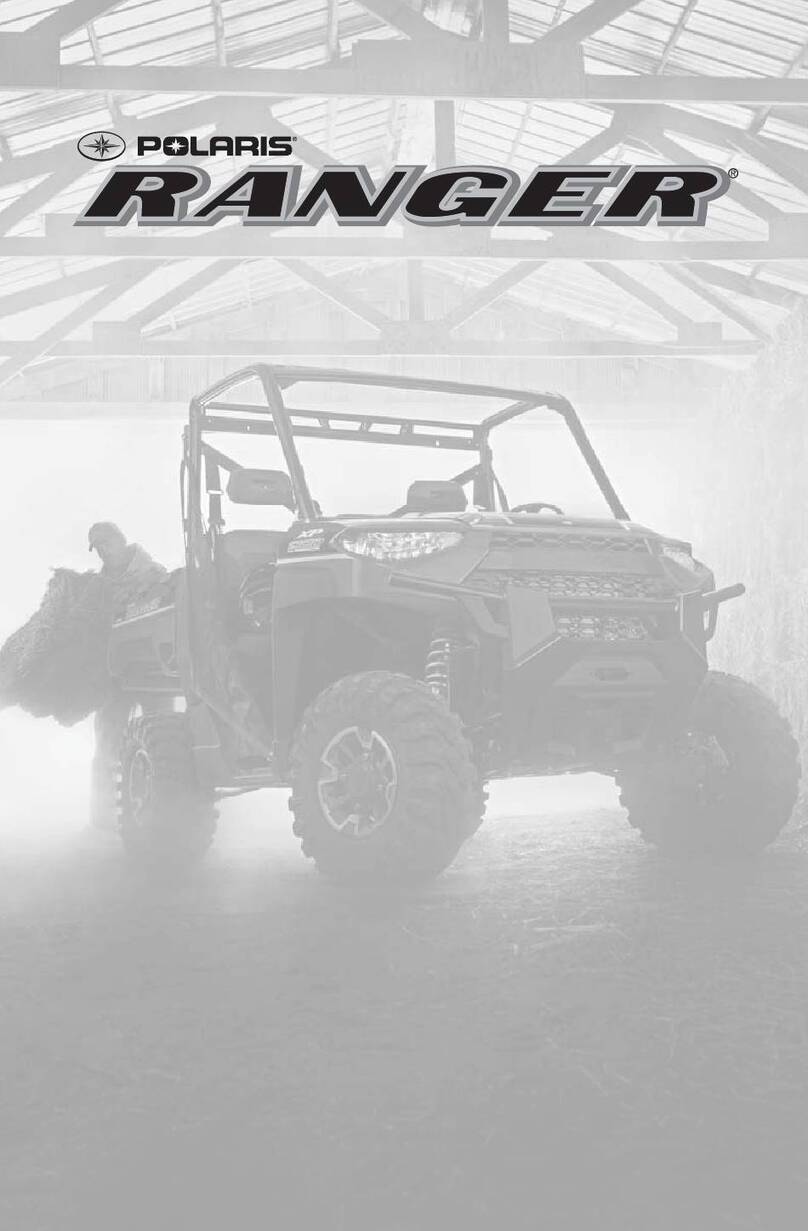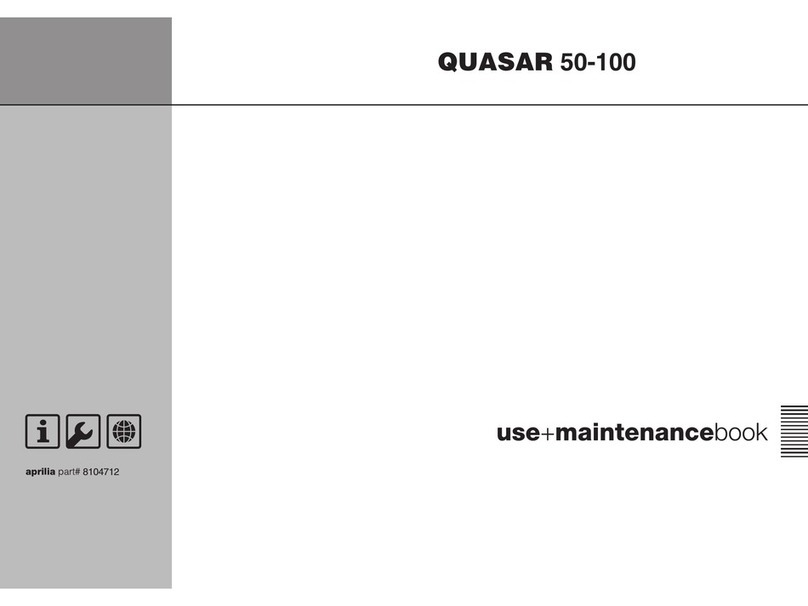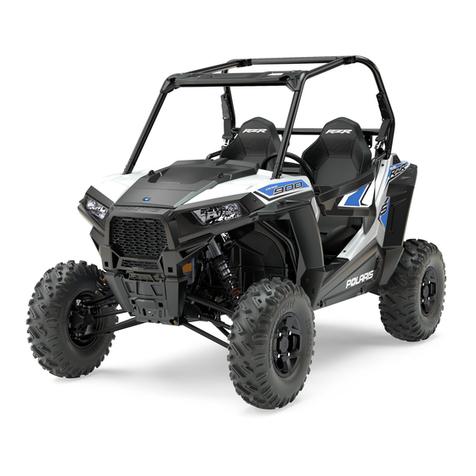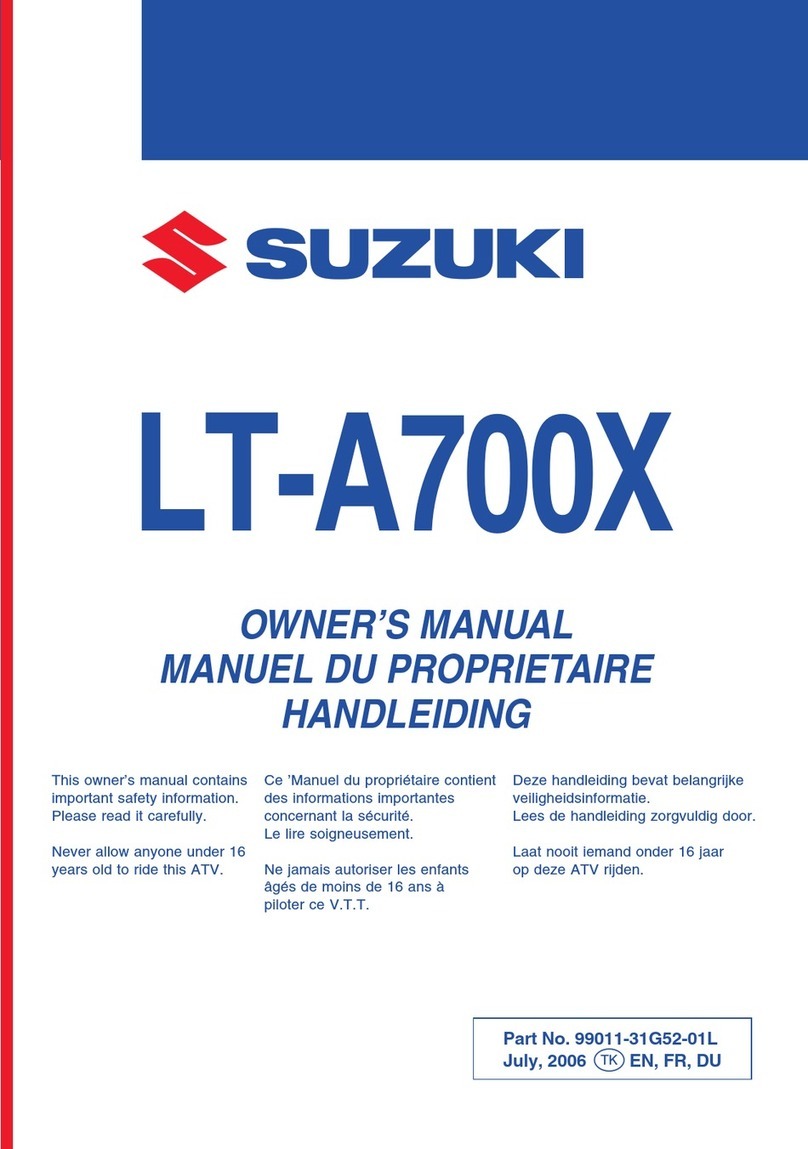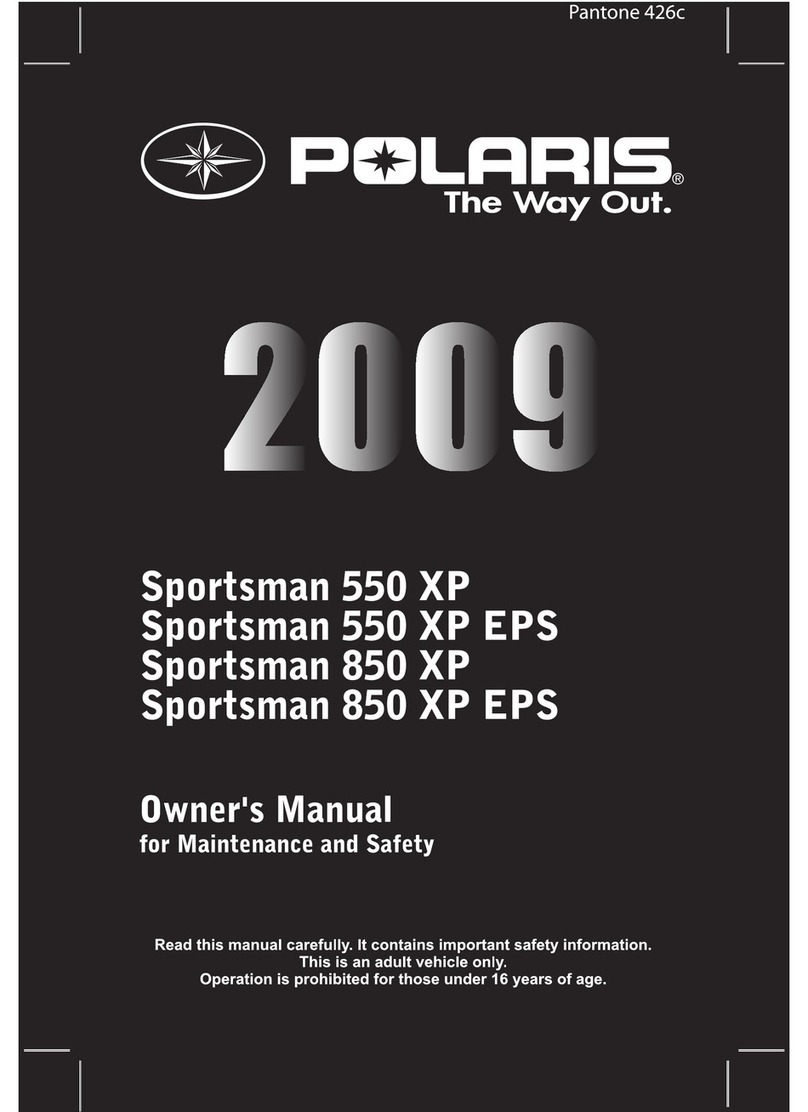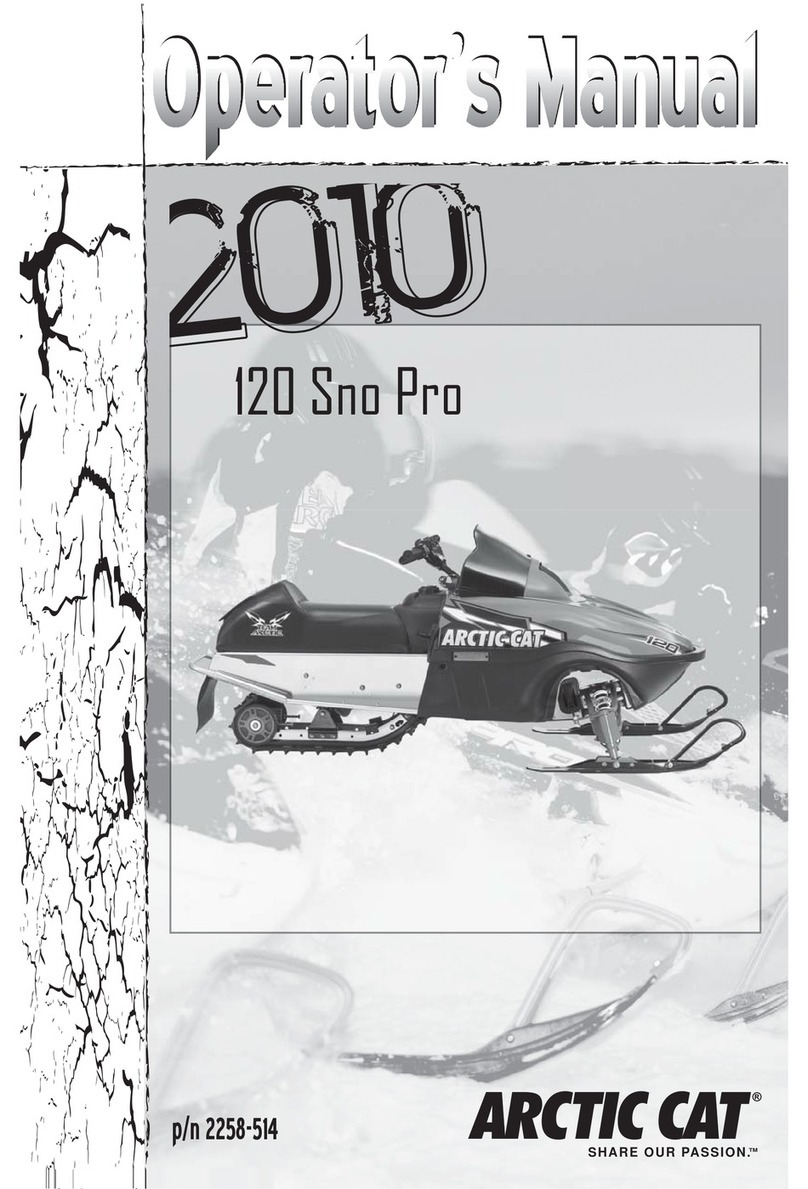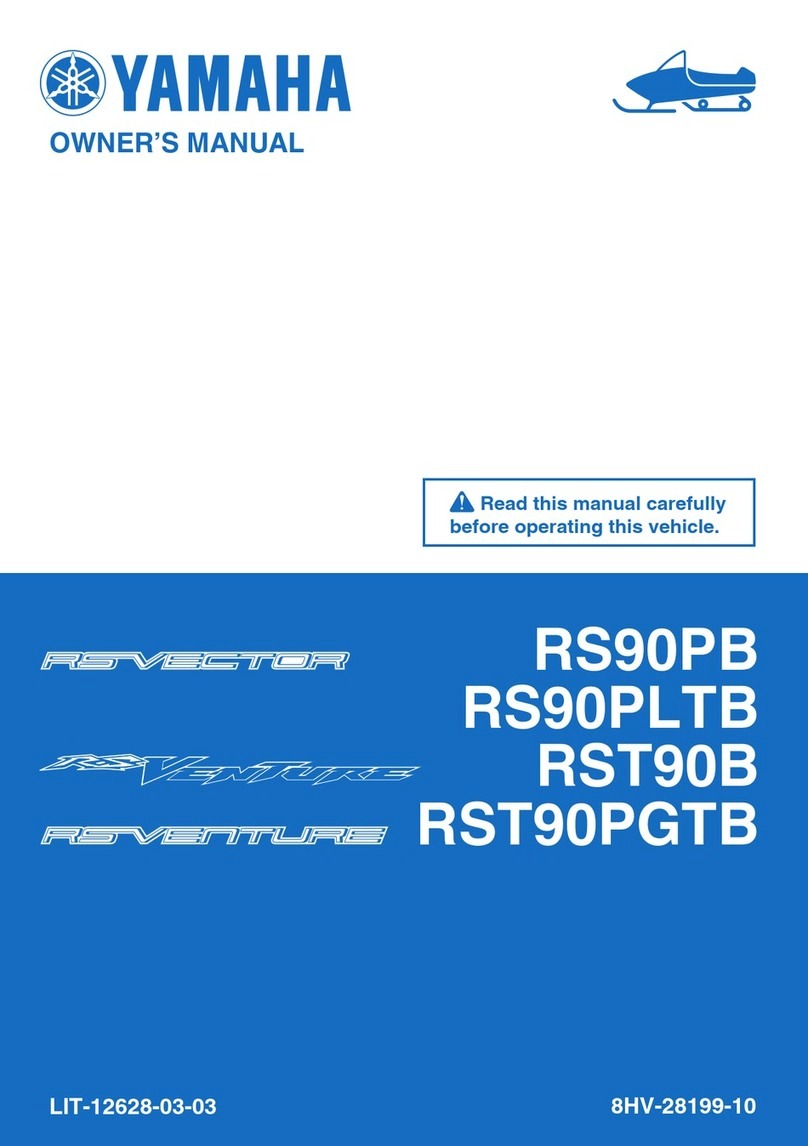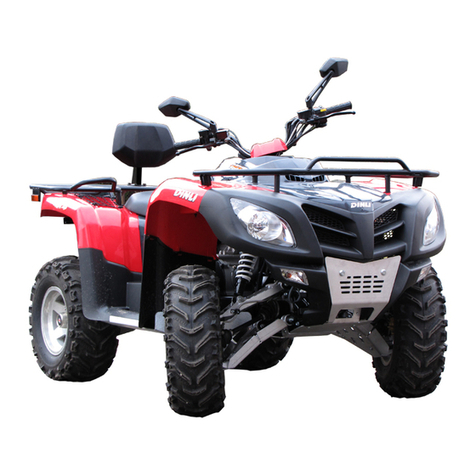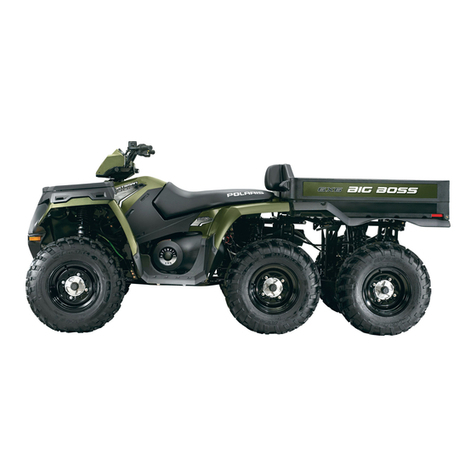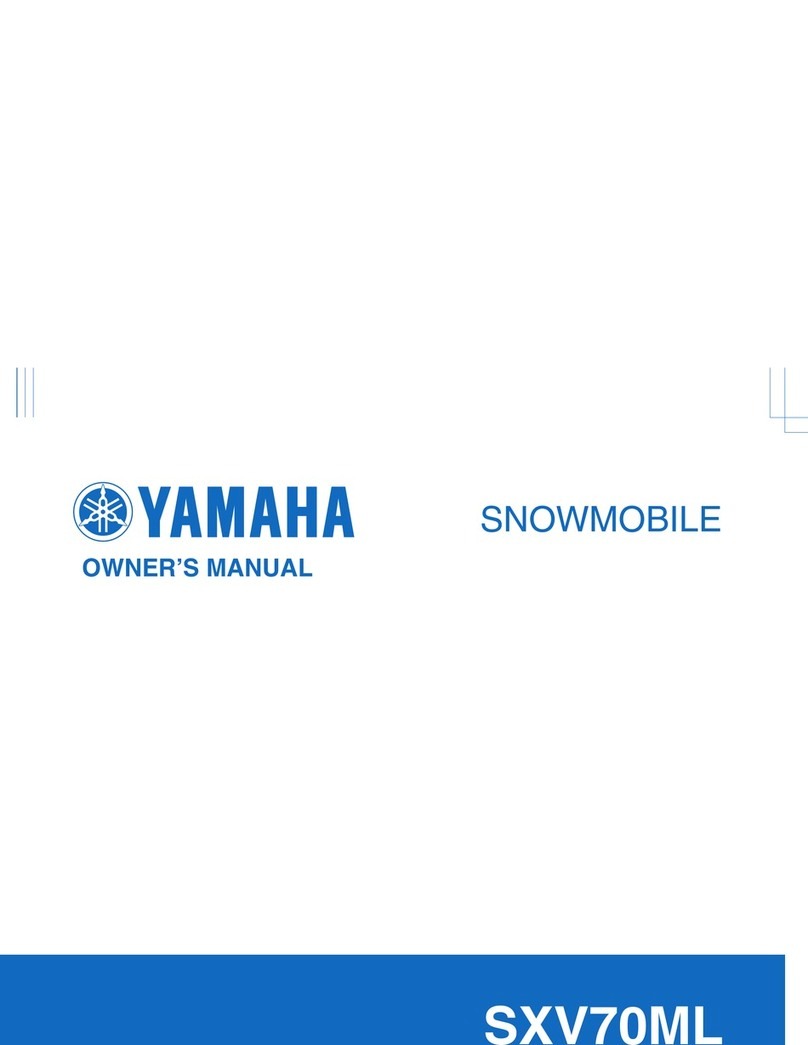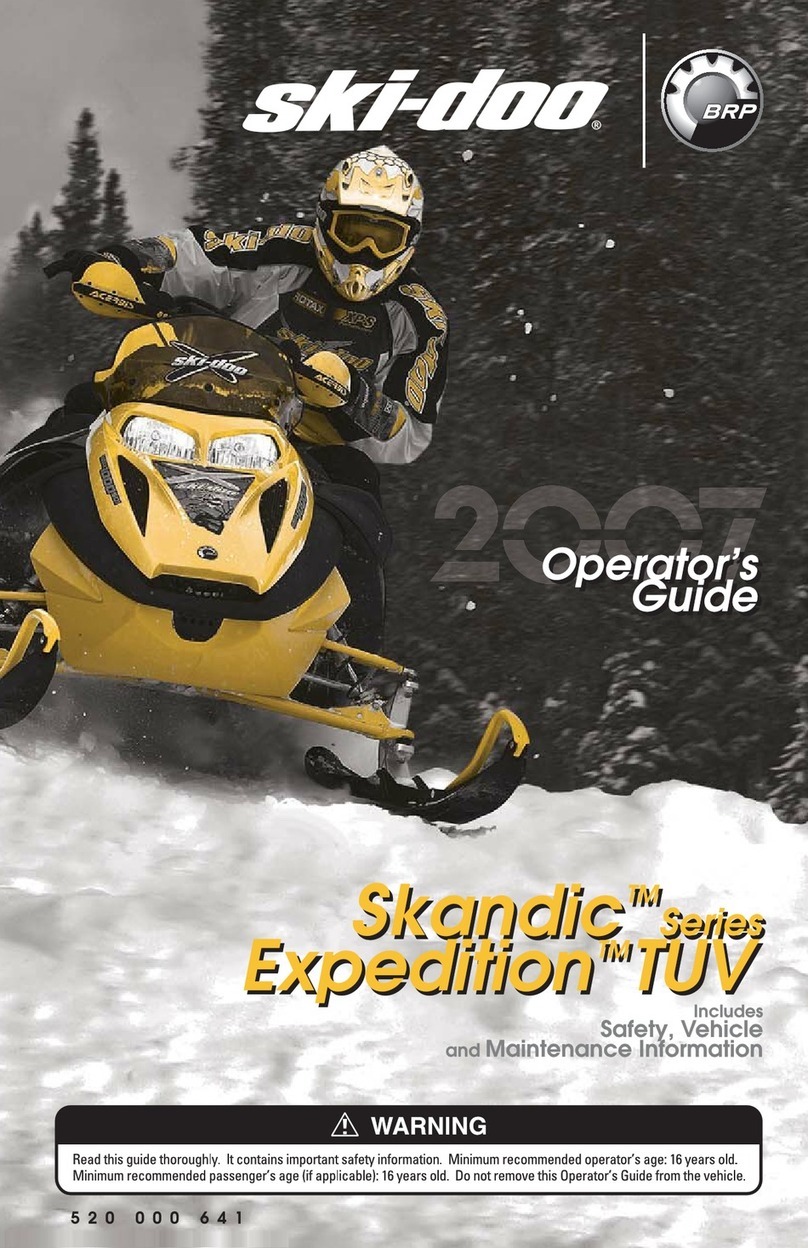Additional safety tips:
Pre-Ride Inspection - Inspecting the condition of your vehicle before each ride is very
important to minimizethe chance of injury and maximize the enjoyment of your ride. It also
helps ensures long term performance of your Vehicle. Follow the owner's manual guide to
inspection and maintenance of your Vehicle.
A well maintained the vehicle will give you years of enjoyment.
Watch out for thin ice which may be camouflaged by snow.
Remember, you can ride further in one hour than you can walk in an entire day.
Participate in an approved the vehicle safety education training program
Always provide responsible adult supervision for the vehicle operators younger than 18
years of age
Don't let youngsters ride full-sized vehicles
Follow all safety recommendations of the vehicles manufacturer
Operate the vehicles only during daylight
Wear a helmet with face protection at all times
Operate only four-wheeled vehicles
Provide a drug and alcohol free environment
Always use the buddy system
Avoid riding in areas where contact with automobiles might be possible
Drive the vehicle on surfaces as recommended by the manufacturer
Travel at speeds conducive to conditions and operator abilities
Check on the conditions of the trails you will be traveling
Know and understand local and state laws governing the use of the vehicles
Permit only one operator per the vehicle
Insist on a "perfect fit" between the vehicle and the physical, mental, and emotional maturity
of the operator
Use antenna flags and wear bright clothing to increase conspicuity.
Use maps and compass if you are riding in an unfamiliar area.
Make a mental note of landmarks; you may need them if you are stranded.
If you are lost at night, do not move around. You will waste valuable fuel that you can use to
ride safety in the daylight.
Carry a first-aid pack with you.
Carry some snacks and a water supply with you.
Carry equipment to handle medical and mechanical emergencies.
Your vehicle field repair kit should include the following items;
the manufacturer's tool kit
wire, tape, elastic cords,
possibly locking pliers
and a towrope.
®
®
®
SAFETY NOTESSAFETY NOTES
®
Page 6

